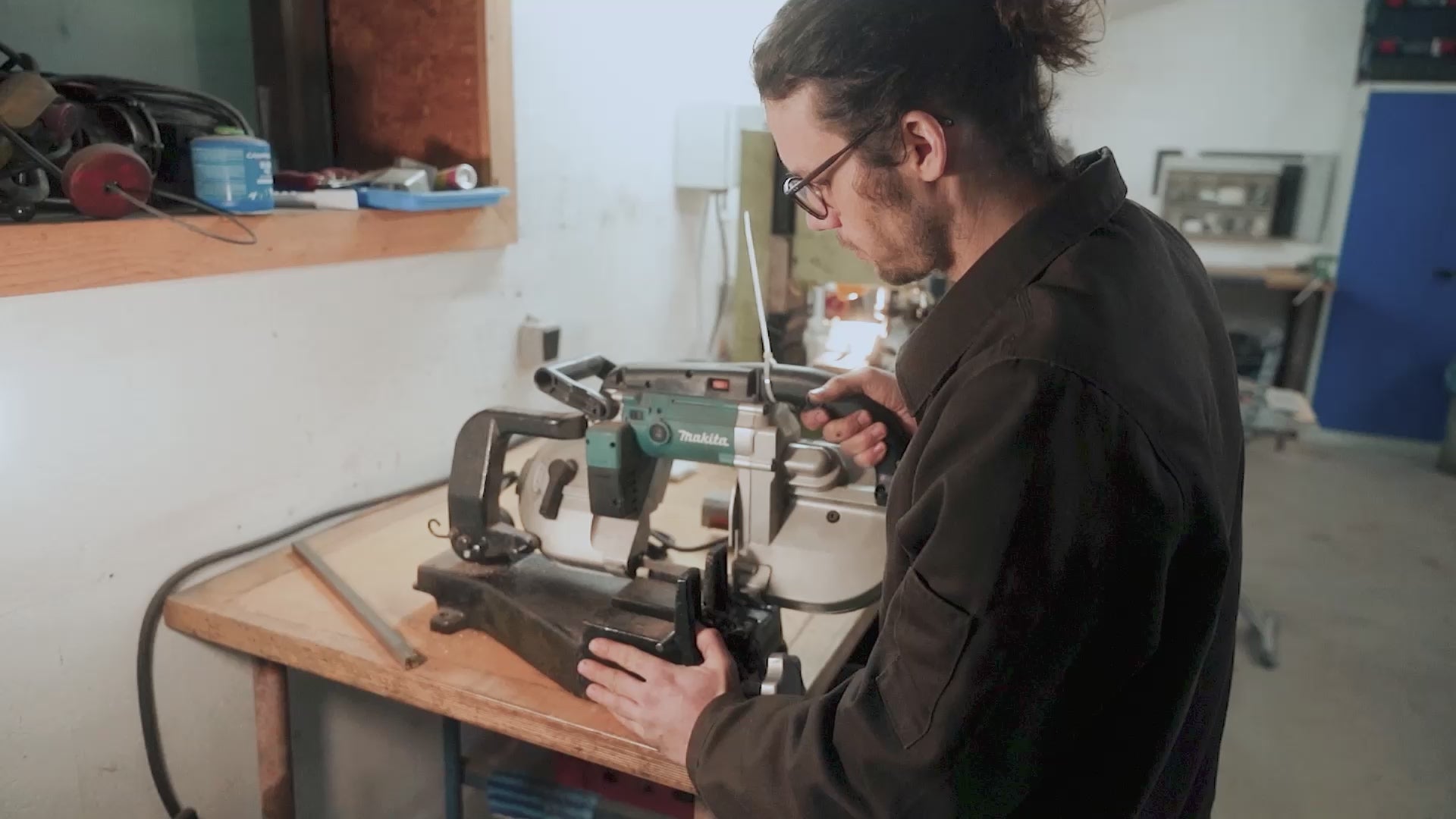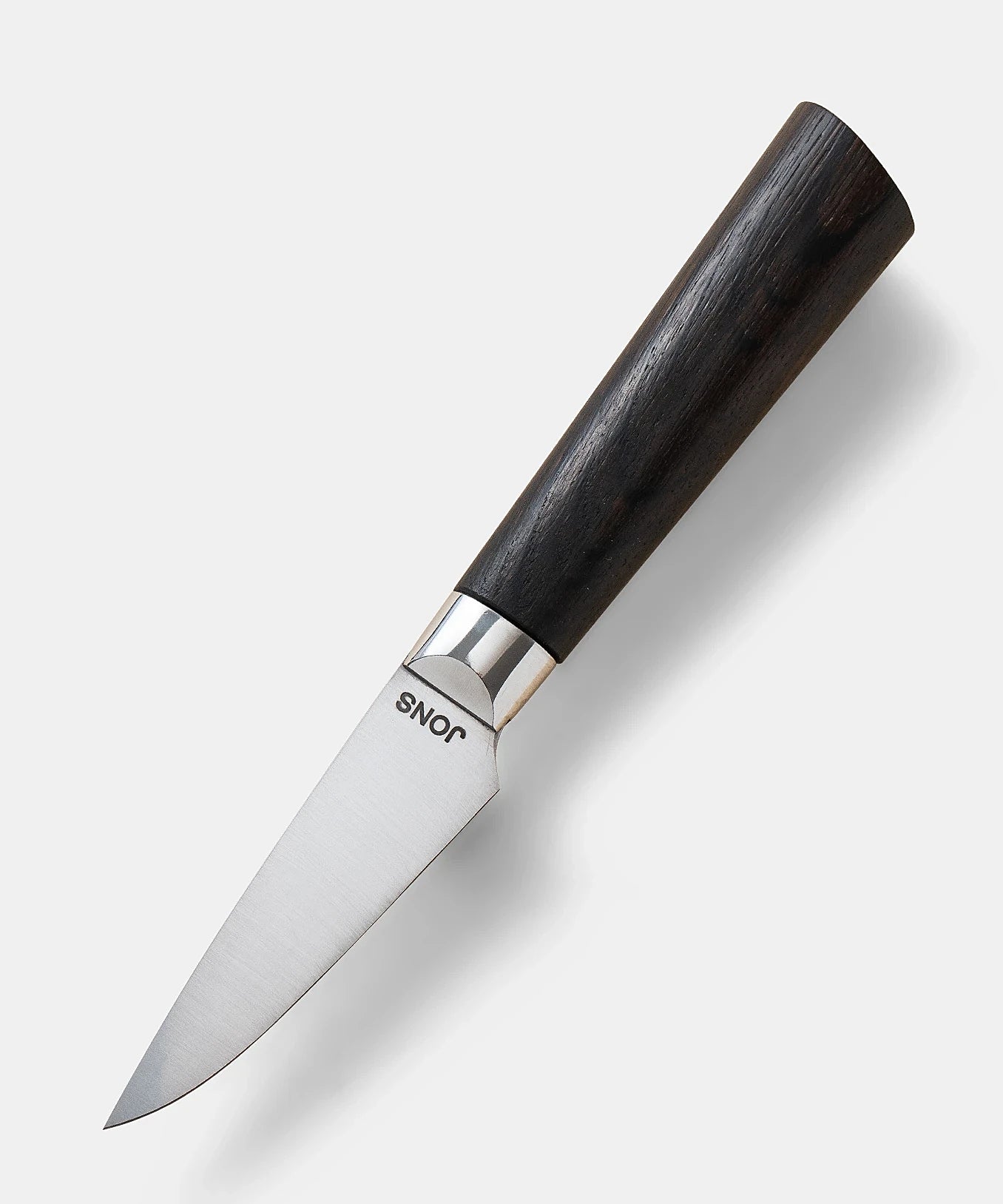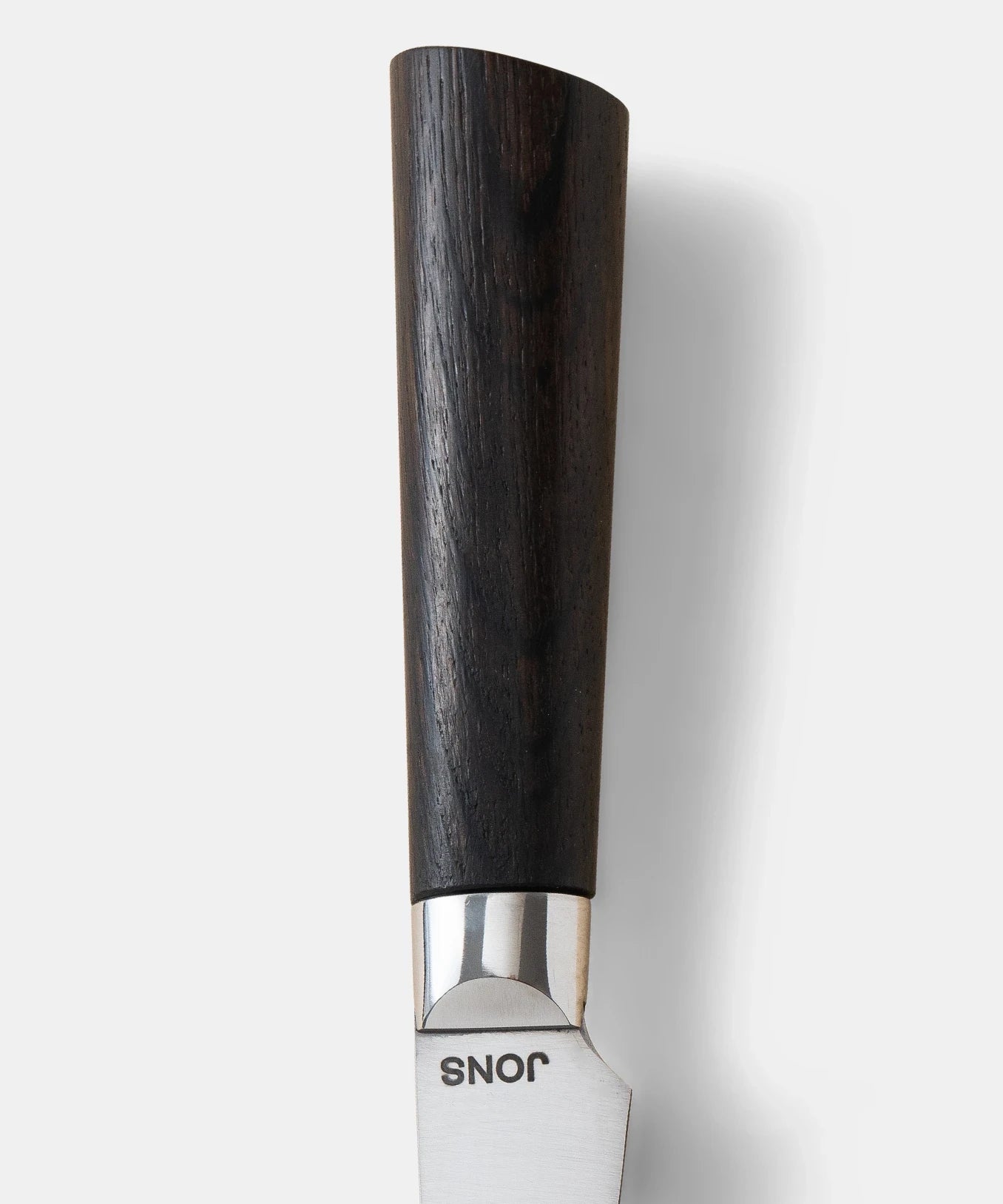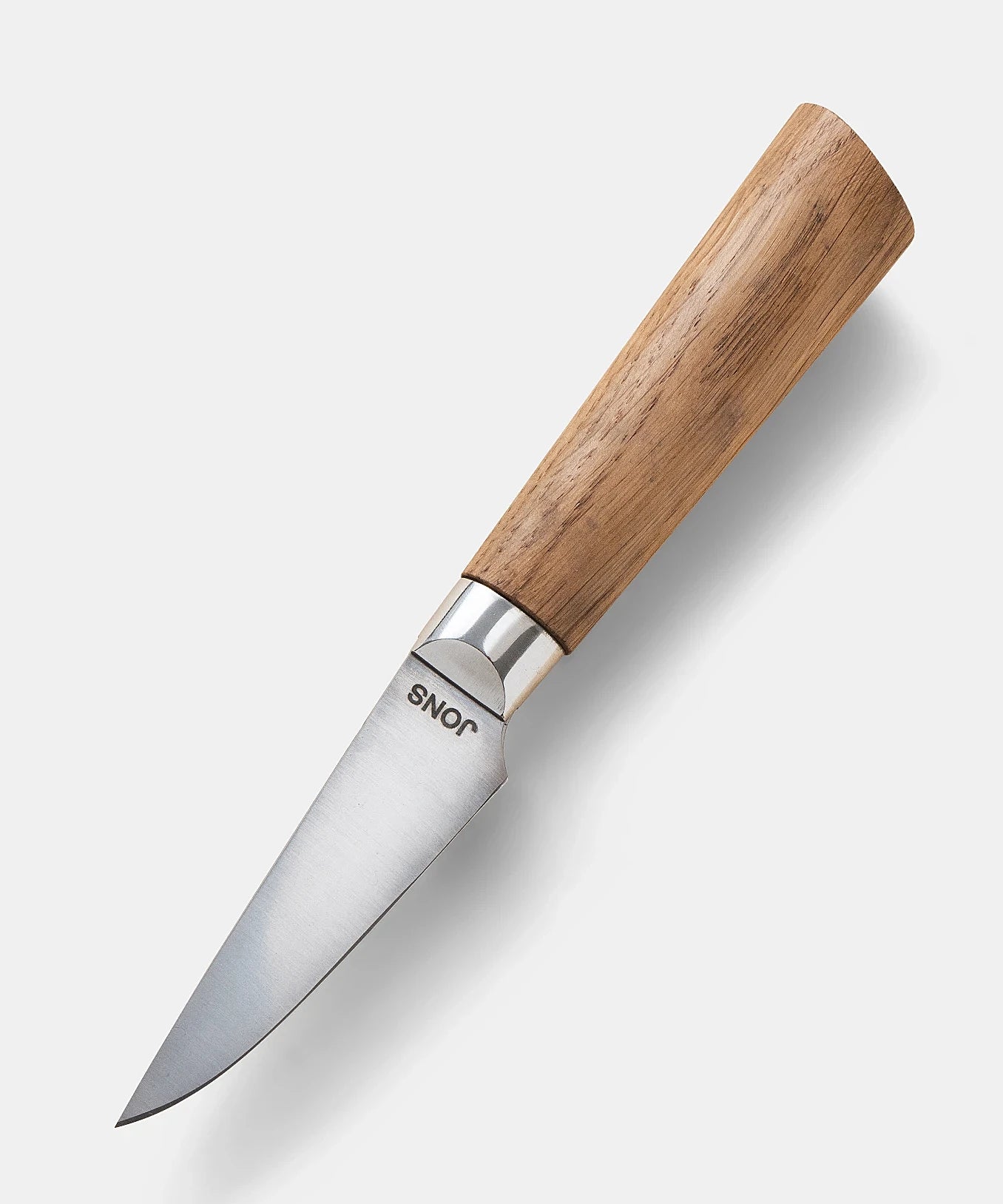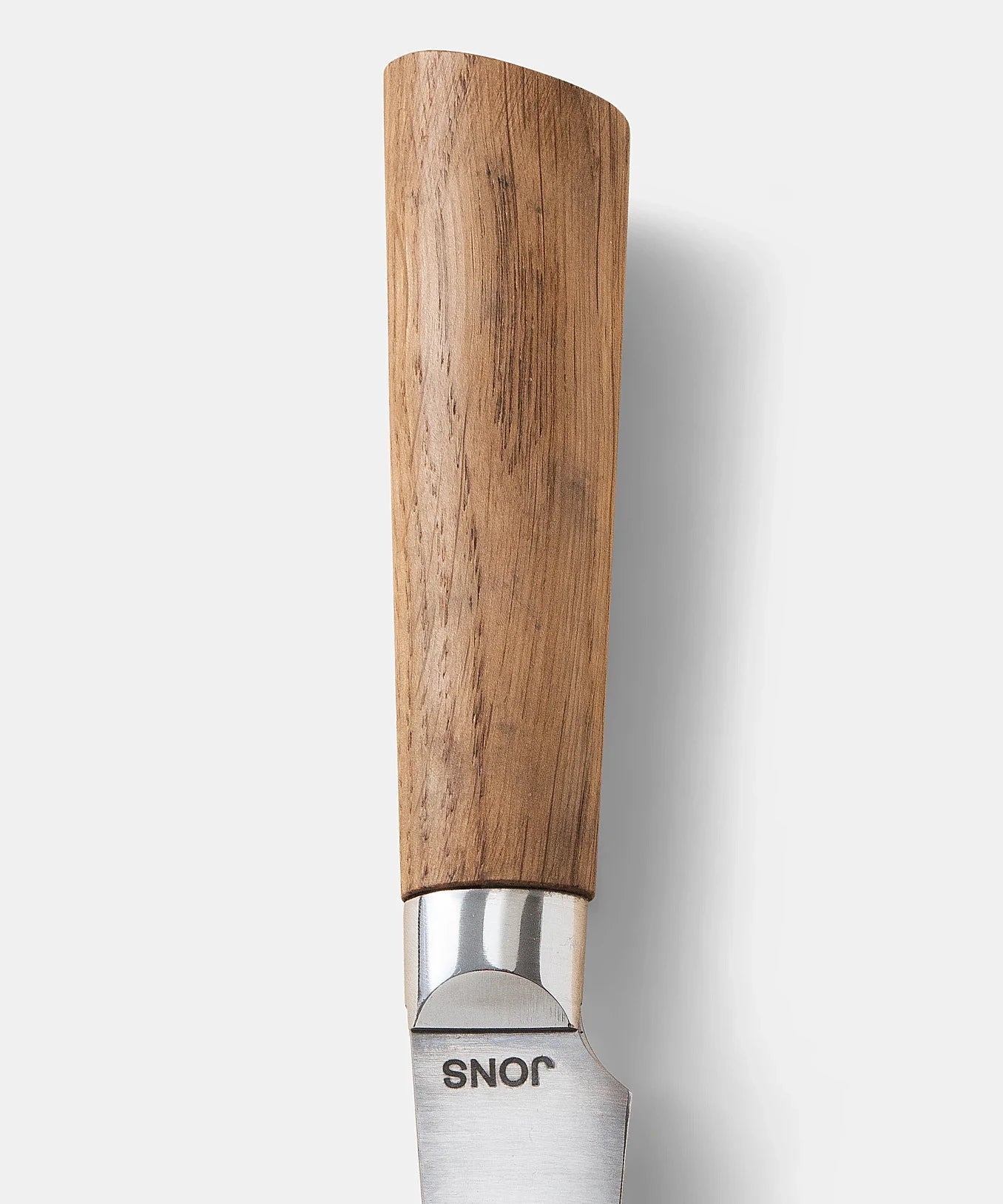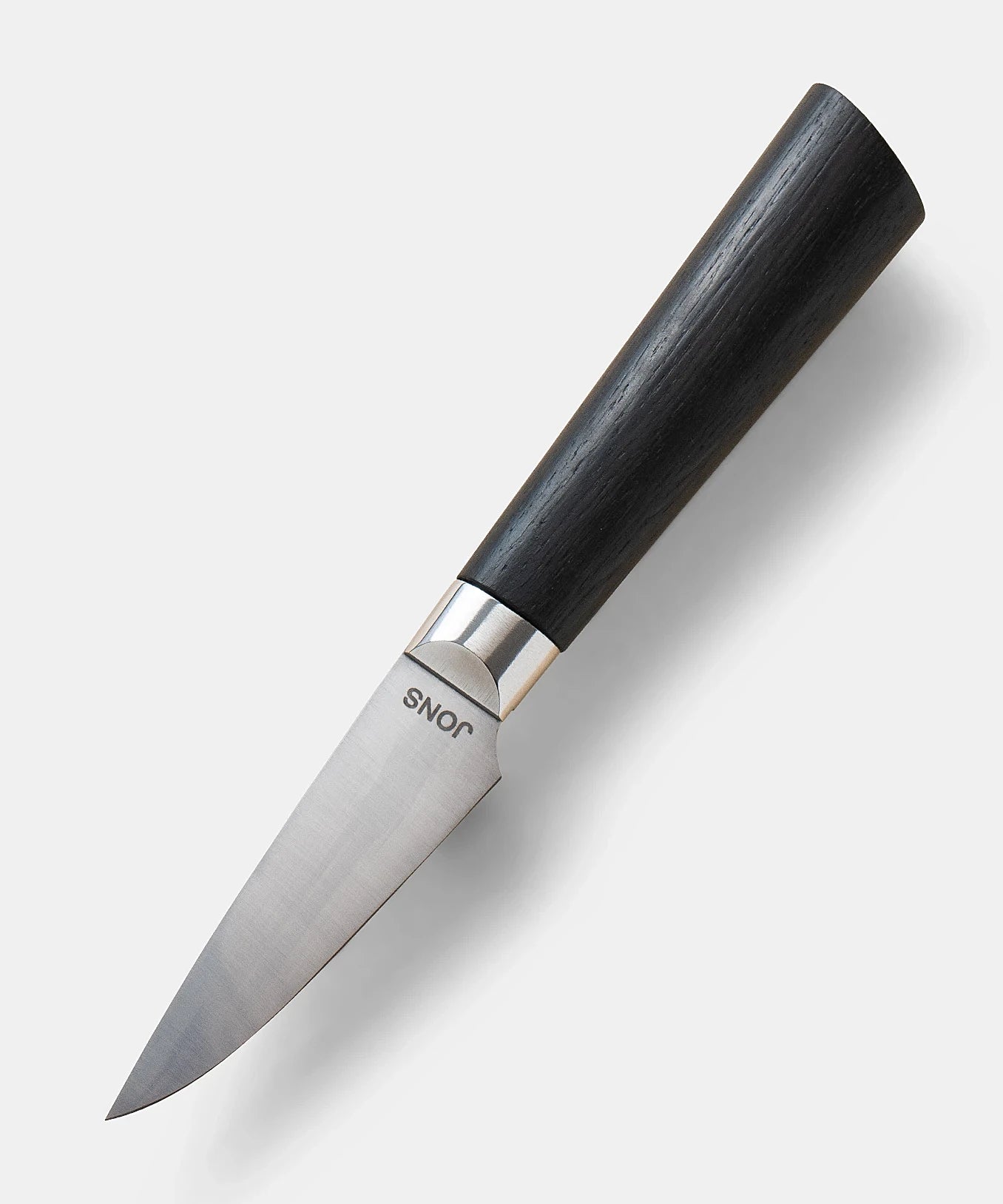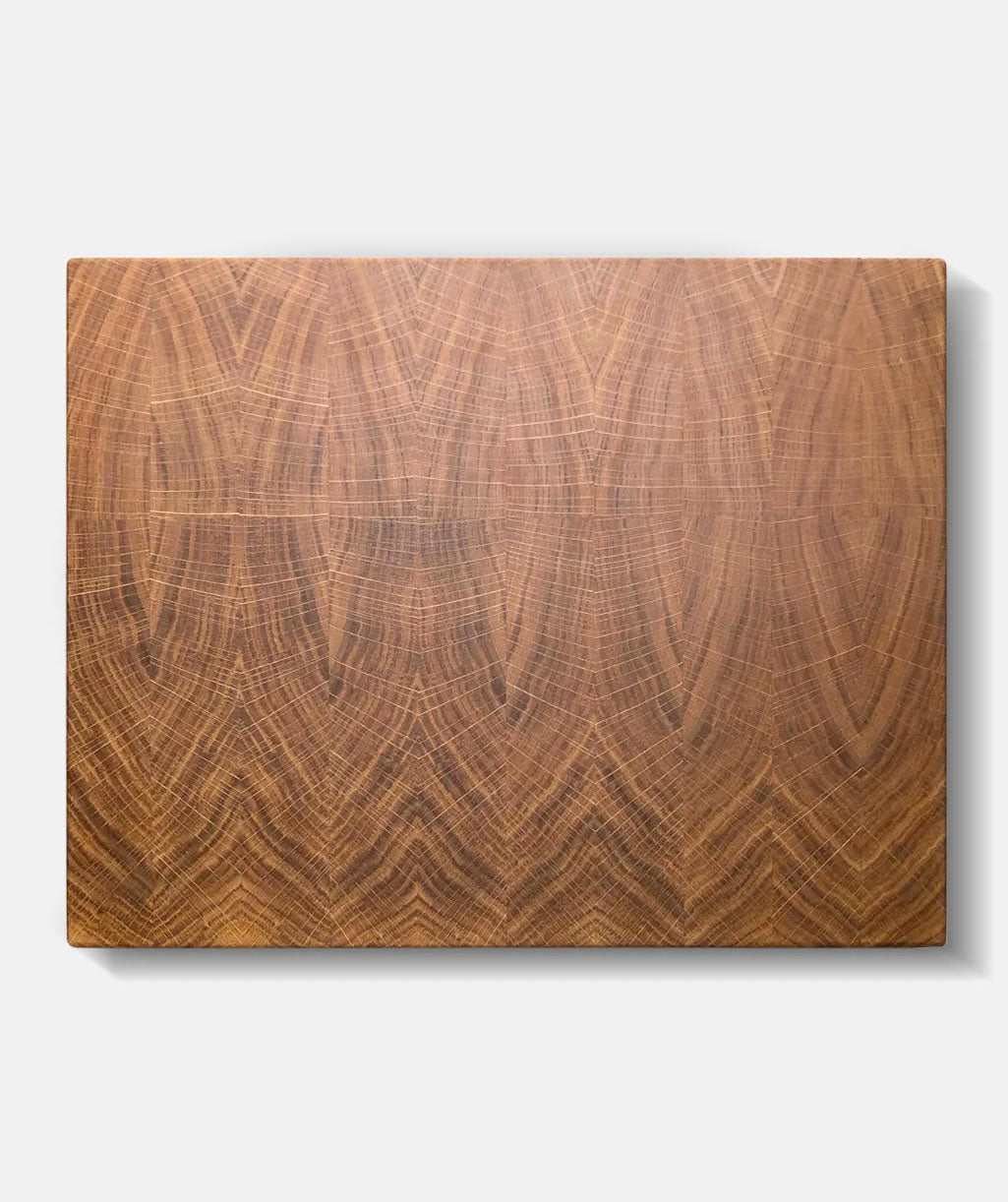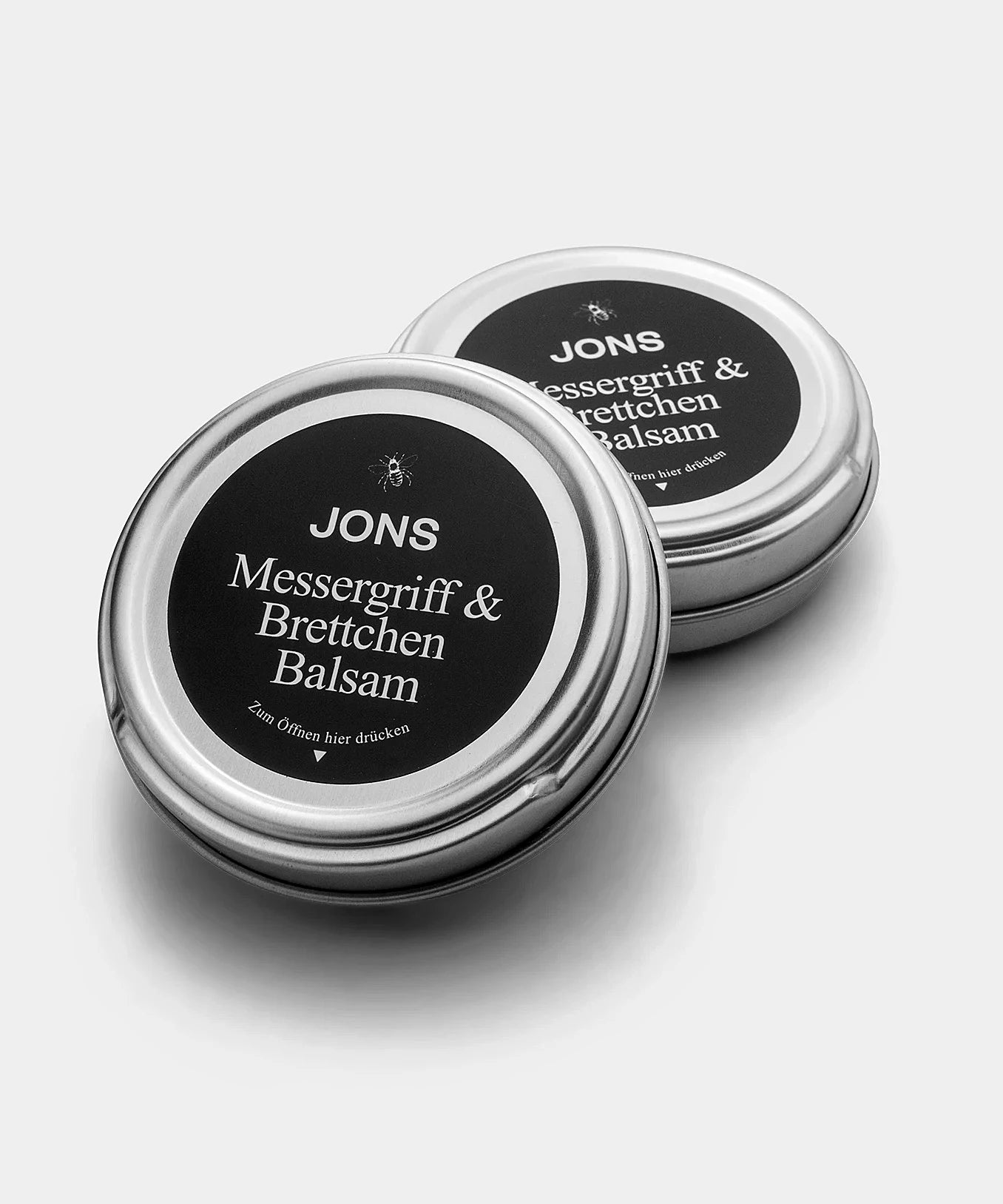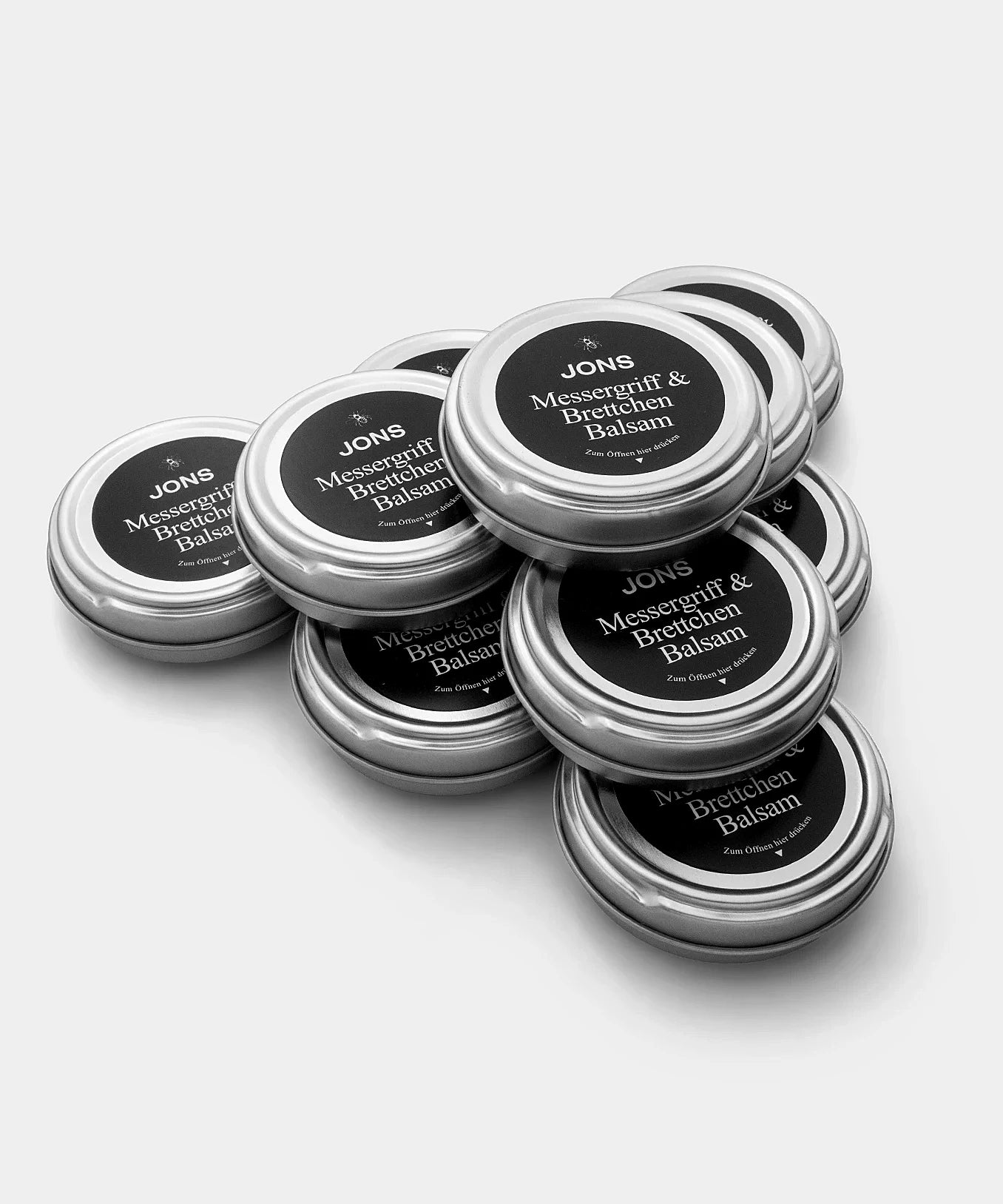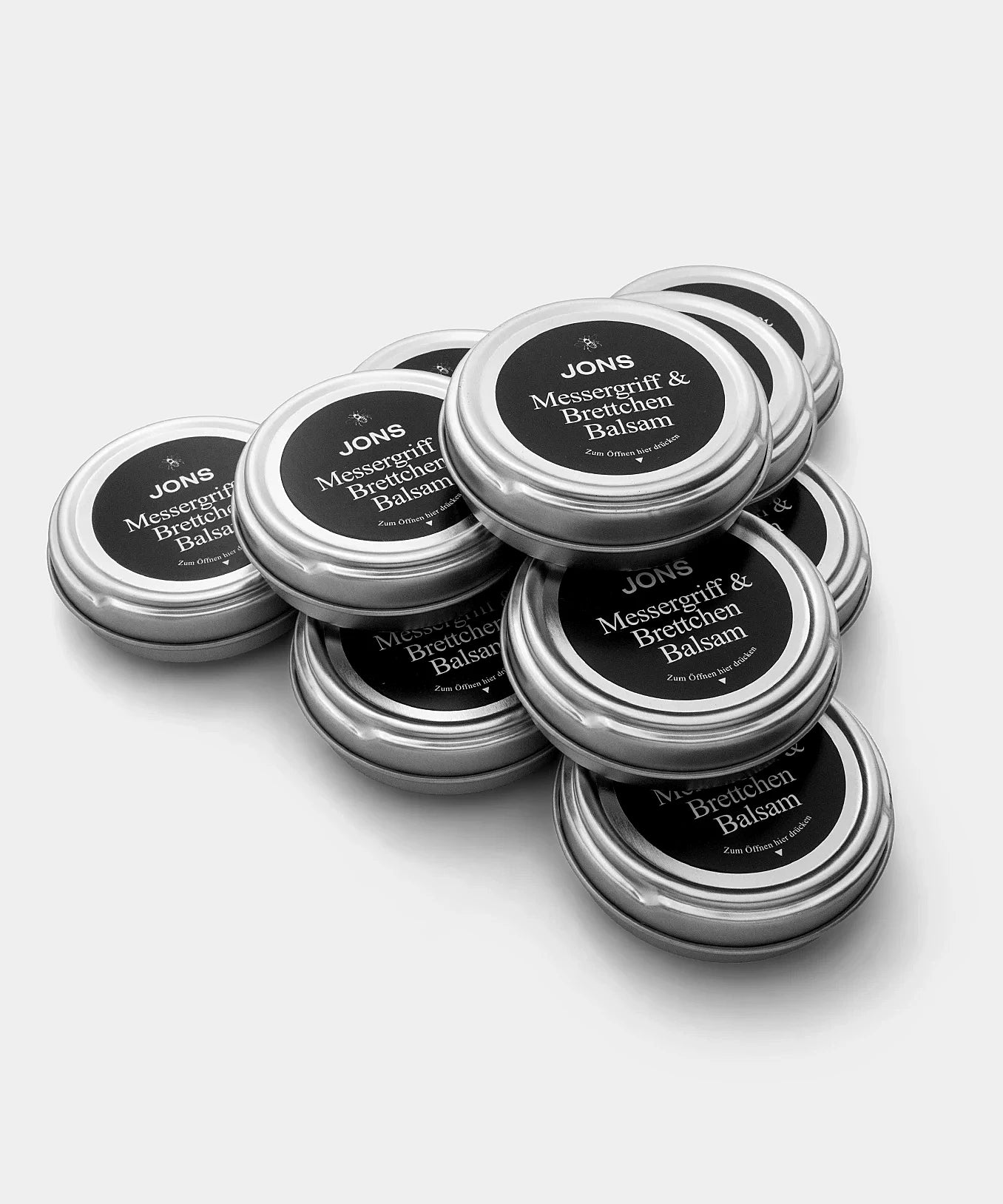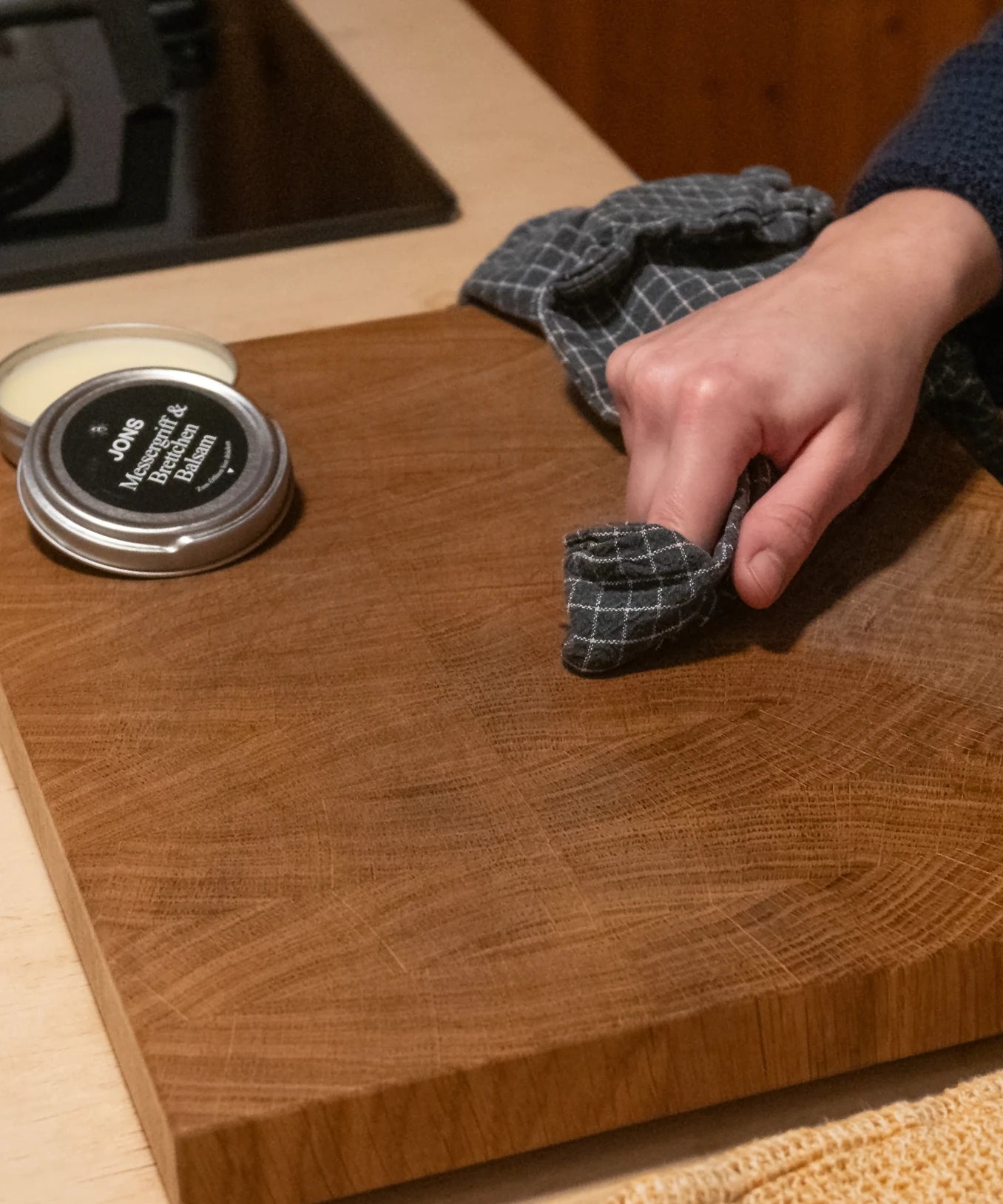- JONS C160
- JONS C090
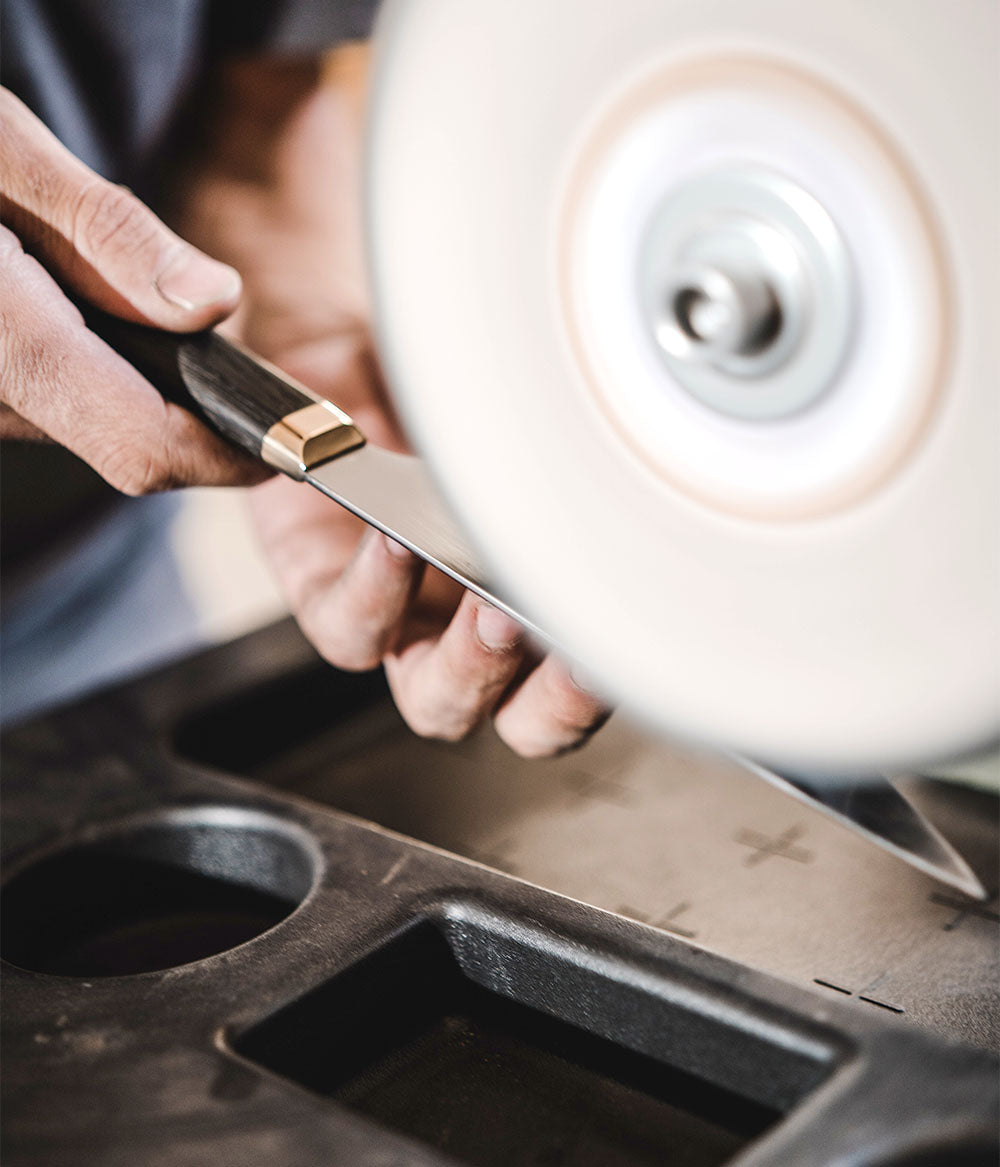
How is a JONS knife made?
From the idea to the finished knife
Each knife is made with great care and an eye for detail – from the initial shaping to the final polish.
Knives that are worth maintaining
From tool to loyal companion
With the right care, everyday kitchen tools become faithful companions for life.


For true connoisseurs
Unique one-of-a-kind pieces
No two knives are the same. Each piece is unique, combining functionality and timeless aesthetics. With great attention to detail, unique pieces are created that are not just tools, but true works of art.


The most important steps at a glance
Manufacturing process
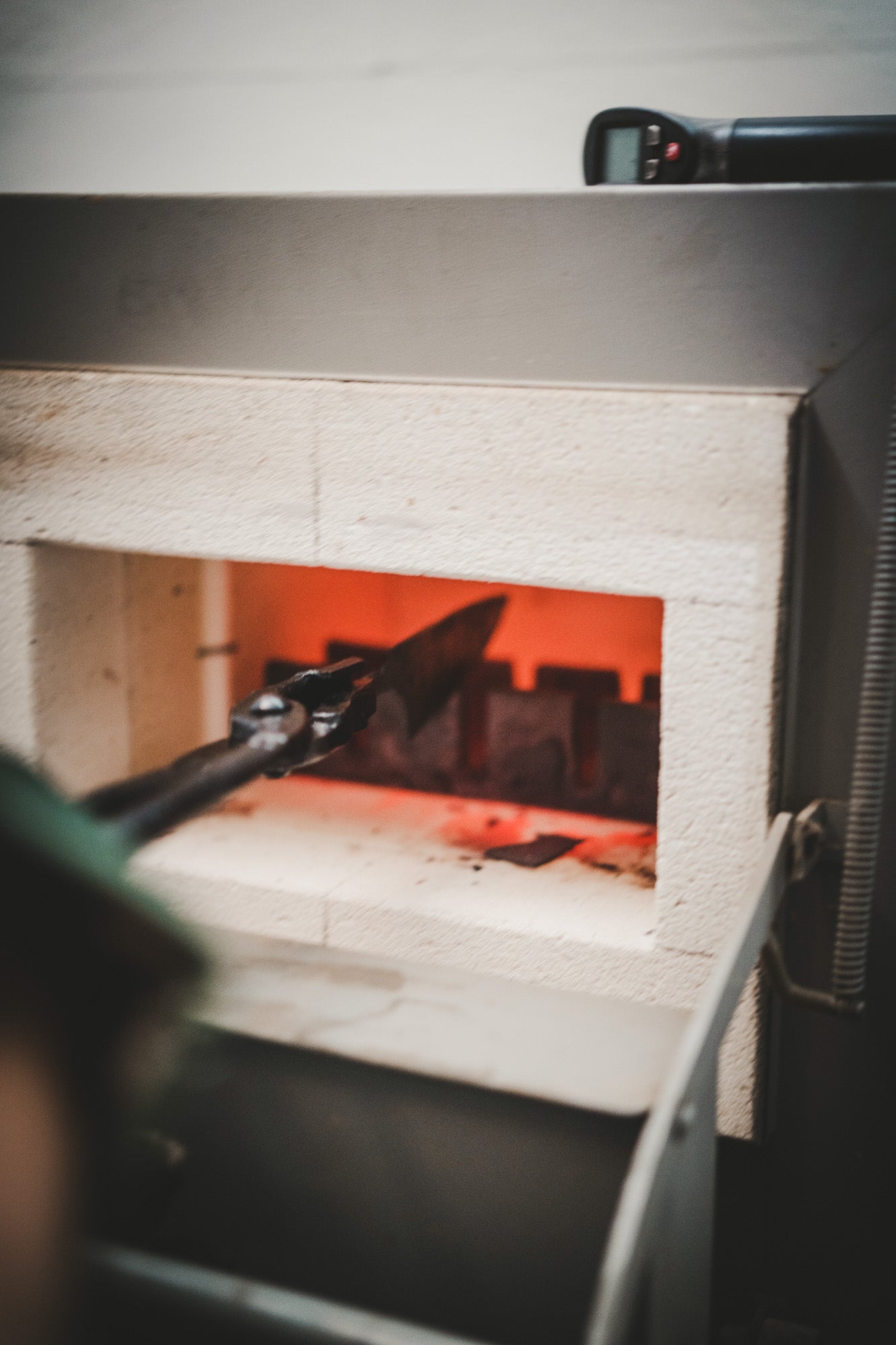
01
Hardening
The heat treatment determines the hardness and toughness of the blade. First, the blade blank is heated to over 800 degrees Celsius and then quenched in an oil bath to achieve the desired hardness. This is followed by tempering at 180 degrees Celsius. The result: a very balanced blade in terms of edge retention, toughness and sharpness.
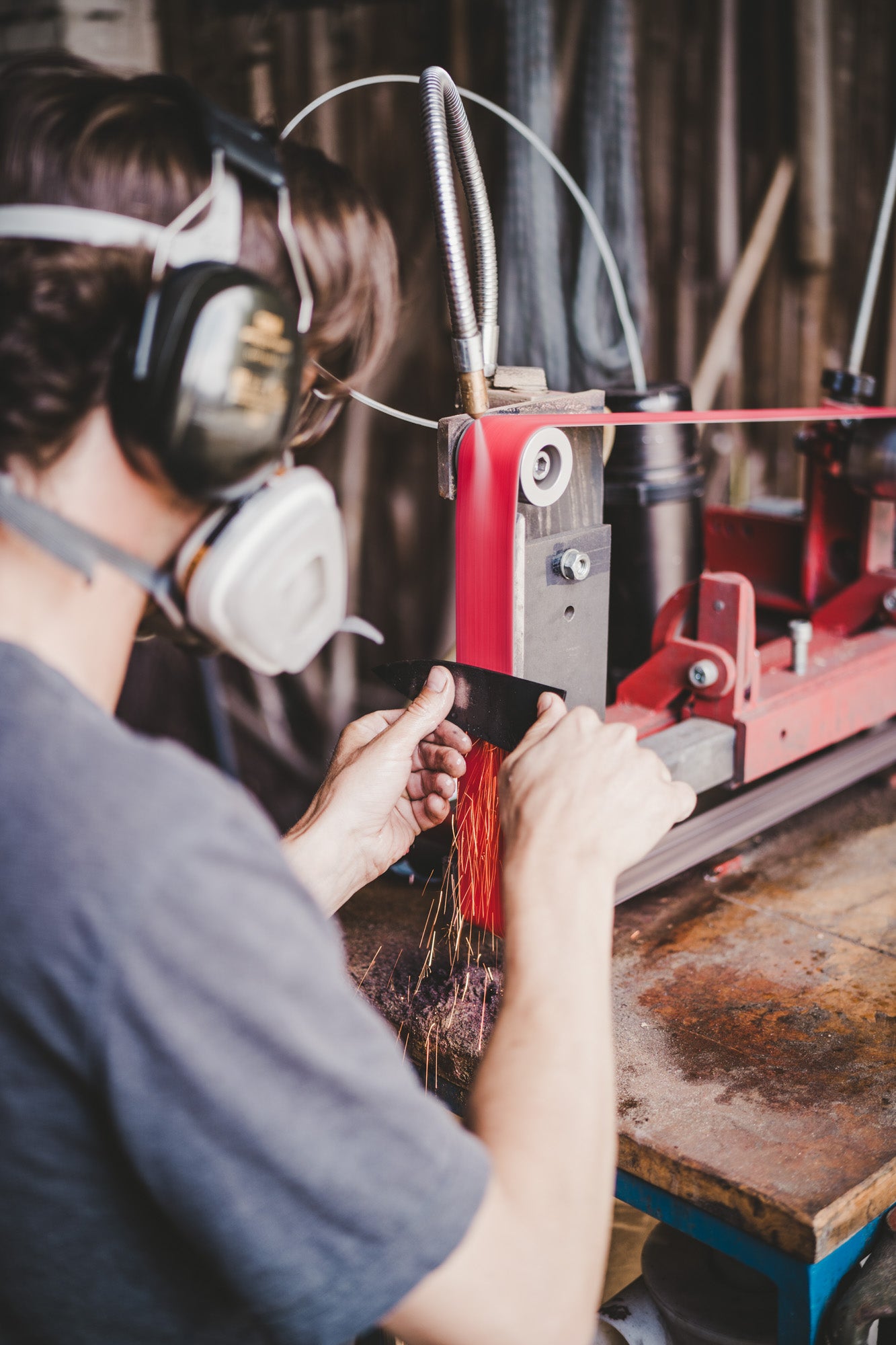
02
Grinding the blade
The geometry of the blade determines its cutting performance. The hardened blade is processed with the utmost care and finely ground on the belt grinder. It is then given its finish in several steps, either with a satin finish or with an enforced patina.
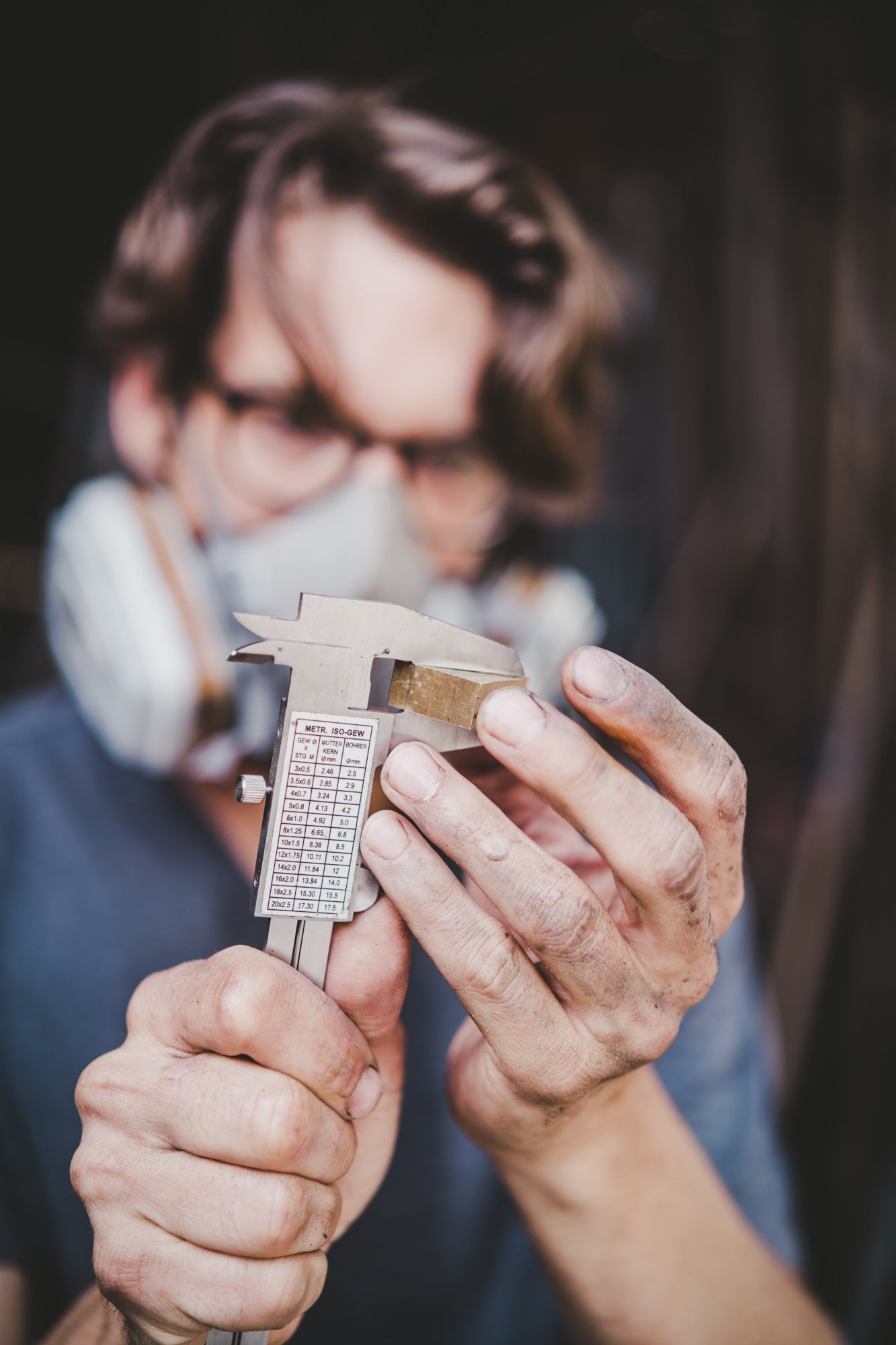
03
The fit
The fit connects the blade to the handle and ensures stability and a distinctive look. The blank is CNC milled to the highest precision. It is then reworked and polished by hand to ensure the perfect connection. A clean fit is essential for the quality and design of the knife.

04
The handle
Inspired by local nature, the handles are made from carefully selected woods such as oak, smoked oak or bog oak. After milling the blanks, the finishing work is done by hand. Each handle is sanded and finished with an oil finish to ensure a pleasant feel and natural protection.

05
Everything fits together
Once the blade, handle and fit are complete, all components are brought together. The individual parts are firmly bonded together using epoxy resin. This step is crucial to ensure the knife is stable and long-lasting. After assembly, the knife is ready for the final touches.

06
Sharpening
For an outstanding cutting experience, the blade is sharpened in the final step. With a precise grinding angle of 13 degrees, the cutting edge gets its excellent sharpness. Now the knife is complete - functional, aesthetic and ready to take its place in the kitchen as a faithful companion.
Frequently Asked Questions
Difference between etched and non-etched blade?
Etched blade:
- Appearance: Darker, often patterned
- Process: Acid removes material, highlights patterns.
- Protection: Light corrosion protection, but more sensitive.
- Feel: Slightly rough, matte surface.
Non-etched blade:
- Appearance: Glossy or matt polished, without pattern.
- Process: Untreated or just polished.
- Protection: No extra protection, possibly more susceptible to rust.
- Feel: Smooth, more resistant to abrasion.
Why does my knife develop a patina?
A knife develops a patina because the blade reacts with oxygen, moisture and acidic foods. Carbon steel in particular tends to develop a dark, often spotty protective layer.
The patina is not harmful – many knife users even appreciate it because it protects the knife and gives it an individual look.
Why do we use carbon steel?
We use high-quality carbon steel because it offers outstanding sharpness and edge retention. These properties make it the ideal choice for precise and durable knives. In addition, carbon steel enables a particularly fine blade that will remain powerful for years with regular care.
How do I properly care for my knife?
Care instructions for carbon steel:
- Cleaning: After each use, clean by hand with warm water and a soft cloth – never put in the dishwasher.
- Drying: Dry thoroughly immediately to avoid rust formation.
- Care: Rub the blade regularly with food-safe oil to protect it from corrosion.
- Storage: Store the knife in a dry place, preferably in a knife block or on a magnetic strip.
Which wooden handles do we offer?
- Bog oak: This wood comes from thousands of years old, preserved trees found in bogs. It is characterized by its dark brown to deep black color and exceptional hardness. Each handle made of bog oak is a piece of history and absolutely unique.
- Smoked oak: Smoking gives the oak a darker, more elegant color and increased stability. It offers a warm, uniform look that goes perfectly with timeless designs.
- Natural Oak: The classic variant, known for its light, natural wood grain. It conveys a feeling of originality and simple elegance, ideal for minimalist knife designs.
Can the knives be resharpened?
Yes, all of our knives can be resharpened easily. We recommend a whetstone or a professional sharpening service.
How long does the delivery take?
Since each knife is individually manufactured, the delivery time is usually 2-3 weeks.
Is there a guarantee?
Yes, we offer a 2-year warranty against defects in materials and workmanship.


